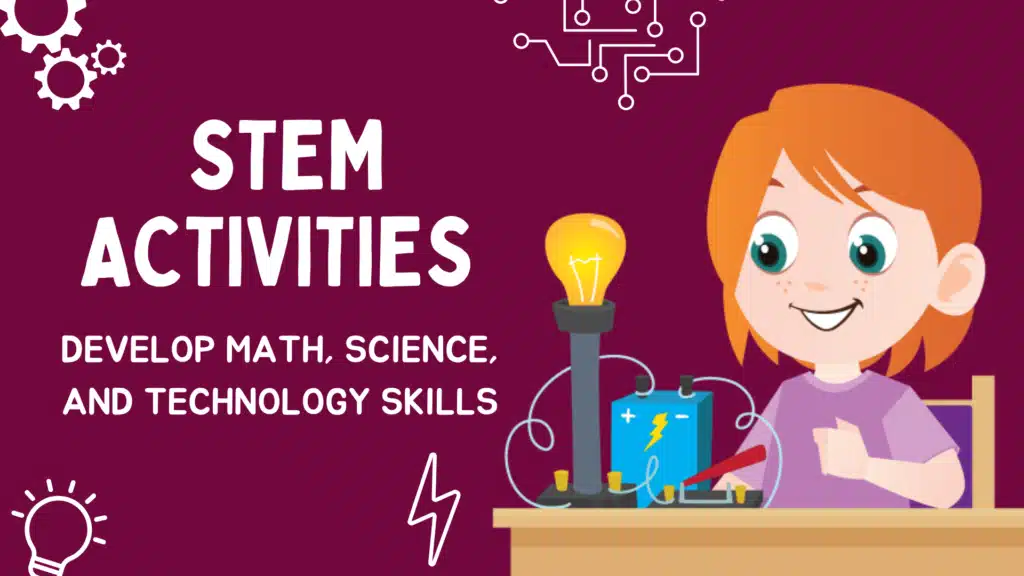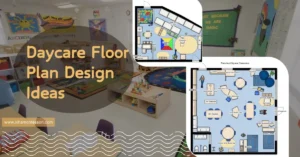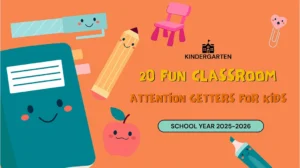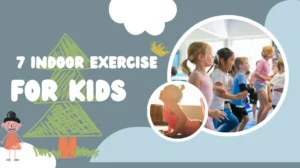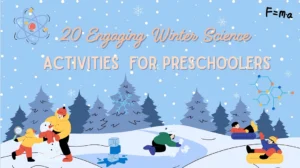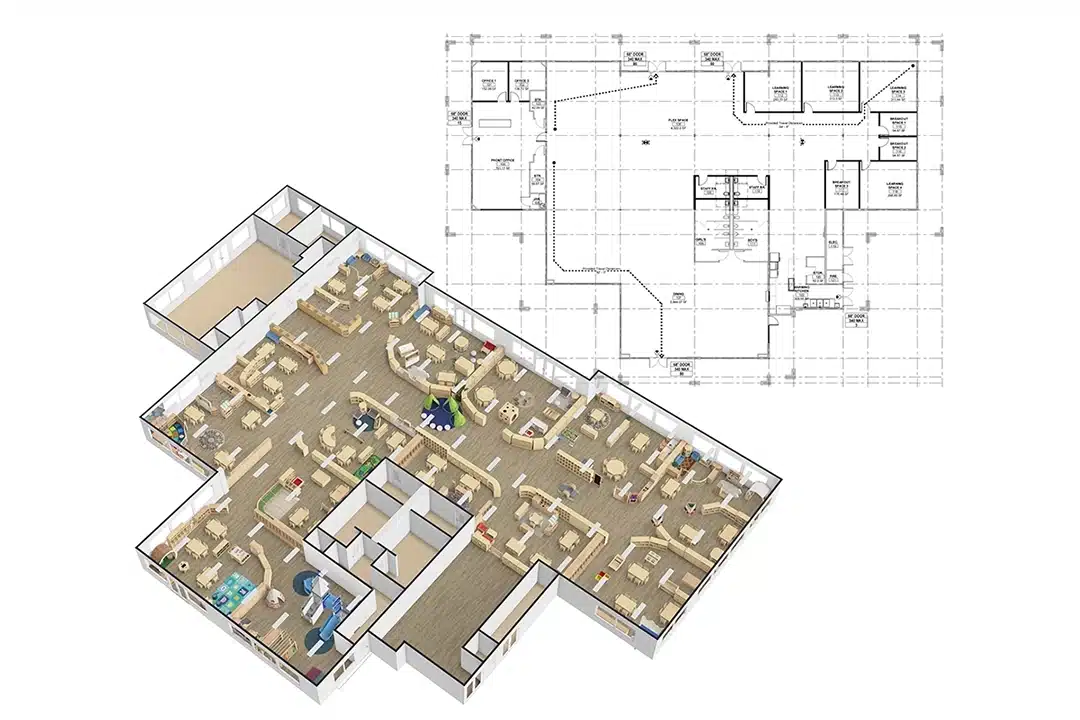Are you searching for truly effective STEM Activities for Kids in preschool settings? Do you find it challenging to select activities that are not just fun, but also scientifically structured to build real math, science, and technology foundations? Are you worried about wasting precious class time on activities that don’t align with preschool learning goals?
Choosing the right STEM Activities for Kids in preschool is crucial because these early experiences build the foundation for lifelong learning. High-quality STEM activities encourage critical thinking, creativity, and problem-solving skills from a young age. They nurture curiosity about the world, strengthen early numeracy and literacy development, and foster resilience when facing challenges. By offering developmentally appropriate STEM experiences, educators are not only supporting academic growth but also shaping future innovators, engineers, and scientists who will thrive in a complex and rapidly changing world.
When we select the right activities, we don’t just entertain children — we lay the groundwork for future engineers, scientists, and innovators.
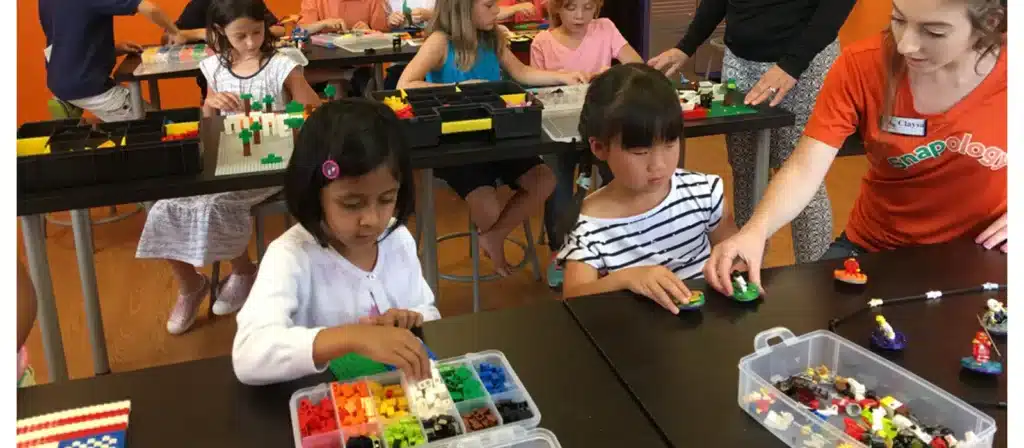
What is STEM?
STEM stands for Science, Technology, Engineering, and Mathematics. It is a teaching approach that integrates these four disciplines into a cohesive learning model based on real-world applications. In recent years, STEM Activities for Kids have become a central focus in early childhood education, especially in preschool settings where building foundational skills is crucial.
Studies show that children exposed to STEM concepts from a young age develop better critical thinking abilities and a stronger interest in scientific exploration later in life.
In the preschool classroom, STEM doesn’t have to be complicated. It can be as simple as asking children to build a bridge using blocks or measuring the rainfall after a storm. What matters is that activities encourage questioning, exploration, and hands-on learning — the very foundation of successful STEM education.

STEM Activities for Kids
STEM Activities for Kids are intentionally designed experiences that combine science, technology, engineering, and math learning objectives into playful, engaging tasks. Unlike traditional activities that may focus on rote memorization, STEM activities encourage children to think critically, solve problems, and apply knowledge in creative ways.
For preschool-aged children, successful STEM Activities for Kids are hands-on, age-appropriate, and open-ended. This means activities where there’s no single right answer — children are free to invent, fail, try again, and explore different outcomes.
Some key features of great STEM Activities for Kids include:
- Promoting inquiry and curiosity
- Offering real-world problem-solving scenarios
- Encouraging teamwork and communication
- Integrating basic math skills like counting, measuring, and pattern recognition
- Introducing simple technology tools like magnifying glasses, pulleys, or coding toys
Examples of STEM Projects
There are many fun and effective STEM Activities for Kids that fit perfectly into a preschool setting. The best projects combine hands-on exploration with real learning.
Some simple examples include:
- Building a Bridge with Blocks — teaches engineering basics.
- Sink or Float Tests — introduces scientific prediction.
- Growing Seeds — shows biological processes.
- Coding Robots — builds early tech skills.
- Rain Gauge Measurements — teaches basic data collection.
These easy STEM Activities for Kids encourage creativity, problem-solving, and a love for discovery.
Benefits of STEM Activities
Introducing STEM Activities for Kids in preschool offers powerful benefits. At an early age, children naturally ask questions and explore their environment. STEM activities give structure to that curiosity and help children develop essential skills.
Building Critical Thinking Skills
STEM Activities for Kids promote critical thinking by engaging children in a continuous process of questioning, hypothesizing, testing, and analyzing. Early cognitive development research shows that structured problem-solving experiences strengthen neural pathways associated with reasoning and logic.
In STEM-focused tasks, children do not receive immediate answers; they are encouraged to explore possibilities and understand causal relationships. This self-driven learning style forms the cognitive flexibility essential for adapting to complex problems later in life.
Encouraging Creativity and Innovation
Creativity is not an innate trait but a skill that can be cultivated through open-ended learning experiences. STEM Activities for Kids inherently require divergent thinking — the ability to generate multiple solutions to a problem.
Scientific studies confirm that environments encouraging exploration and invention increase synaptic connections related to innovative thinking. Early exposure to flexible problem-solving frameworks prepares children to become inventors and innovators rather than passive learners.
Promoting Teamwork and Collaboration
Social learning theory emphasizes that children develop interpersonal skills through shared activities and peer interaction. STEM Activities for Kids, especially in group settings, simulate real-world collaborative environments where negotiation, listening, and leadership naturally emerge.
By solving problems together, children learn essential 21st-century competencies like teamwork and empathy — skills increasingly prioritized by modern educational systems and employers.
Boosting Confidence Through Achievement
A key psychological benefit of STEM Activities for Kids is the development of self-efficacy — the belief in one’s own capabilities to achieve goals. Research in early childhood education shows that successfully completing challenging tasks builds intrinsic motivation and resilience.
Through repeated cycles of trial, failure, and success, children internalize a growth mindset, viewing obstacles as opportunities rather than threats.
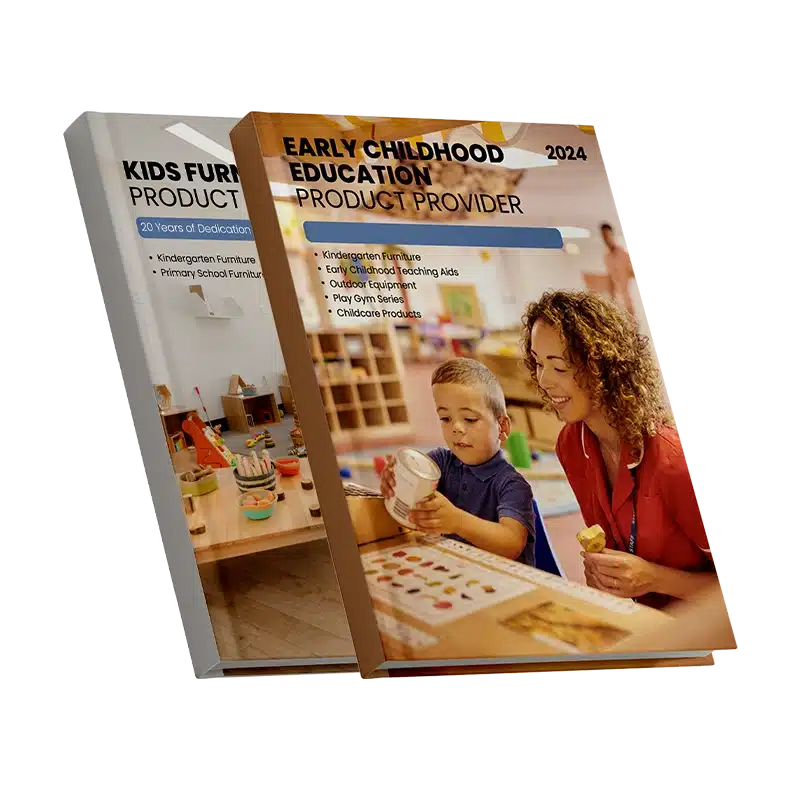
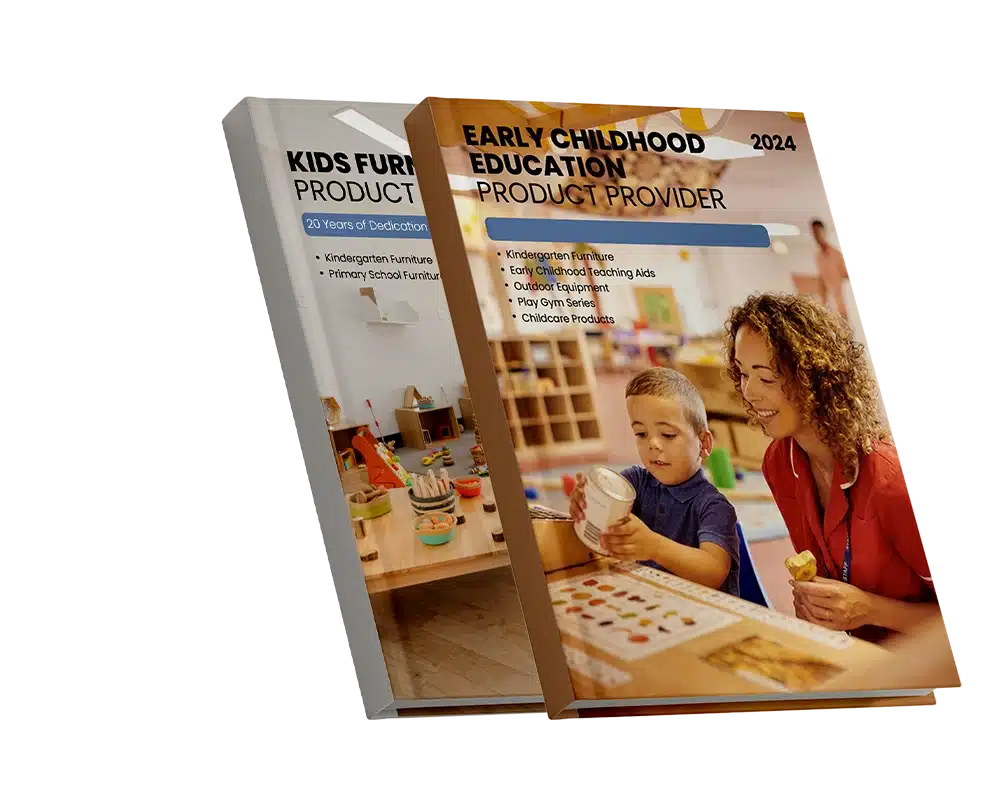
35 Selected STEM Activities for Preschool Kids
1. Stack Paper Rolls
STEM Focus: Engineering, Math
How to Do It:
Challenge children to stack empty paper rolls as high as possible without them falling over. Please encourage them to experiment with different base shapes and support methods.
Materials Needed:
- Empty toilet paper rolls
- Masking tape
- Scissors
This STEM Activity for Kids strengthens early engineering skills by introducing concepts of balance, structure, and spatial design.

2. Rain Gauge Activity
STEM Focus: Science, Math
How to Do It:
Help children cut the top off a clear plastic bottle, invert it inside to create a funnel, and mark measurement lines along the side. Place the gauge outside to collect rainwater and record measurements daily.
Materials Needed:
- Clear plastic bottle
- Ruler
- Marker
- Scissors
Through this STEM Activity for Kids, children practice observation, data collection, and simple scientific recording.
3. Dinosaur Excavation
STEM Focus: Science
How to Do It:
Bury small toy dinosaurs in a tray of sand or dirt. Provide tools like brushes and spoons to carefully excavate them, mimicking a real paleontology dig.
Materials Needed:
- Small plastic dinosaurs
- Sand or soil
- Brushes, spoons
This hands-on STEM Activity for Kids builds fine motor skills and introduces the basics of earth sciences and discovery methods.

4. Sliding Down a Ramp
STEM Focus: Physics, Engineering
How to Do It:
Create a ramp using cardboard or wood. Let children slide different objects down and observe which ones go faster or slower. Adjust ramp angles to explore friction and gravity.
Materials Needed:
- Cardboard or wood plank
- Various objects (cars, balls, blocks)
- Books to adjust height
By engaging in this STEM Activity for Kids, children learn cause and effect through experimentation with physical forces.

5. Sink or Float
STEM Focus: Science
How to Do It:
Fill a large container with water. Let children predict whether various household items will sink or float before testing their hypotheses.
Materials Needed:
- Water tub
- Variety of small objects (stone, plastic toy, sponge, coin)
This classic STEM Activity for Kids sharpens observational skills and introduces basic principles of density and buoyancy.
6. Build a Pretend Train
STEM Focus: Engineering, Creativity
How to Do It:
Children use cardboard boxes and other recyclable materials to build a pretend train. They can design different “cars” and connect them together, focusing on balance and structure.
Materials Needed:
- Cardboard boxes
- String or tape
- Markers and stickers for decoration
This STEM Activity for Kids strengthens engineering thinking, spatial planning, and creative problem-solving.

7. Make a Lemon Volcano
STEM Focus: Science, Chemistry
How to Do It:
Cut a lemon in half, add baking soda into the cut surface, and observe the chemical reaction. Children can poke the lemon with a spoon to activate more bubbling.
Materials Needed:
- Lemons
- Baking soda
- Food coloring (optional)
- Spoon
This fun STEM Activity for Kids introduces basic chemical reactions in an exciting, hands-on way.
8. Create a Rainbow in a Jar
STEM Focus: Science, Math
How to Do It:
Layer liquids of different densities (like honey, dish soap, water, and oil) carefully into a clear jar to create a colorful rainbow effect.
Materials Needed:
- Clear jar
- Honey, dish soap, water, oil
- Food coloring (optional)
This STEM Activity for Kids teaches children about density, layering, and careful measurement.

9. Explore Oobleck
STEM Focus: Science, Physics
How to Do It:
Mix cornstarch and water to create Oobleck — a non-Newtonian fluid that behaves like both a solid and liquid depending on pressure.
Materials Needed:
- Cornstarch
- Water
- Bowl
Through this STEM Activity for Kids, children explore material properties and experience hands-on sensory science.

10. Make Edible Finger Paints
STEM Focus: Science, Art Integration
How to Do It:
Mix yogurt with food coloring to create safe, edible paints. Children can paint freely, exploring texture and color blending.
Materials Needed:
- Plain yogurt
- Food coloring
- Mixing bowls
This creative STEM Activity for Kids merges sensory exploration with early chemistry concepts like mixing and color changes.

11. Bubble Experiments
STEM Focus: Science, Physics
How to Do It:
Create different bubble solutions and test which one makes the strongest or largest bubbles. Children can also experiment with homemade bubble wands of various shapes.
Materials Needed:
- Dish soap
- Water
- Glycerin (optional)
- Pipe cleaners or wire for wands
This STEM Activity for Kids introduces surface tension and the science behind liquid films in a playful way.

12. Recycled Creations
STEM Focus: Engineering, Environmental Science
How to Do It:
Provide a variety of clean recycled materials and challenge children to build something new — a robot, a car, a house — encouraging innovation and environmental awareness.
Materials Needed:
- Recycled items (bottles, boxes, caps)
- Glue, tape, scissors
Through this STEM Activity for Kids, preschoolers practice engineering design and sustainability thinking.
13. Stack Plastic Cups into the Tallest Tower
STEM Focus: Engineering, Math
How to Do It:
Challenge children to stack plastic cups as high as possible without letting them topple. They can experiment with different stacking methods to find the most stable design.
Materials Needed:
- Plastic cups
- Flat surface
This STEM Activity for Kids enhances understanding of stability, balance, and geometric arrangements.
14. Build a Monster Trap
STEM Focus: Engineering, Creativity
How to Do It:
Ask children to design and build a “trap” to catch a pretend monster using craft supplies. Emphasize creativity, planning, and structural strength.
Materials Needed:
- Popsicle sticks, string, paper, tape
- Markers and decorations
This STEM Activity for Kids boosts imaginative problem-solving and introduces basic mechanical concepts like pulleys and levers.

15. Create New Animals with LEGO Bricks
STEM Focus: Engineering, Biology
How to Do It:
Invite children to invent and build a brand-new animal using LEGO bricks. They can mix features from real animals and explain how their creature would survive.
Materials Needed:
- LEGO bricks
- Base plates (optional)
This STEM Activity for Kids supports creativity, biological understanding, and engineering skills by combining fantasy with function.

16. Build a Marshmallow Tower
STEM Focus: Engineering, Math
How to Do It:
Challenge children to build the tallest tower they can using only marshmallows and toothpicks. Encourage them to explore different shapes for stability.
Materials Needed:
- Marshmallows
- Toothpicks
This STEM Activity for Kids strengthens spatial reasoning and introduces basic engineering principles.

17. Ice Melting Race
STEM Focus: Science, Physics
How to Do It:
Give each child an ice cube and different materials (salt, warm water, metal spoon) to see who can melt their ice cube the fastest.
Materials Needed:
- Ice cubes
- Salt, warm water, metal spoons
Children explore heat transfer and physical changes through this STEM Activity for Kids.

18. Design a Paper Airplane
STEM Focus: Engineering, Physics
How to Do It:
Let children design, fold, and test different paper airplanes, observing which designs fly farthest or highest.
Materials Needed:
- Paper
- Markers for decoration
This STEM Activity for Kids introduces aerodynamics and iterative design.

19. Water Filtration Experiment
STEM Focus: Science, Environmental Science
How to Do It:
Layer sand, gravel, and cotton in a plastic bottle to create a mini water filter. Test it with dirty water and observe the results.
Materials Needed:
- Plastic bottle
- Sand, gravel, cotton
- Dirty water (muddy water)
This STEM Activity for Kids demonstrates filtration and water purification basics.

20. Floating Boat Challenge
STEM Focus: Engineering, Physics
How to Do It:
Children design boats from aluminum foil or other materials to see which floats the best and holds the most weight.
Materials Needed:
- Aluminum foil
- Water tub
- Pennies or small weights
This STEM Activity for Kids encourages creative problem-solving and buoyancy exploration.

21. Walking Water Science Experiment
STEM Focus: Science, Chemistry
How to Do It:
Place cups of colored water next to empty cups with paper towels connecting them. Watch as water “walks” and mixes colors.
Materials Needed:
- Clear cups
- Water, food coloring
- Paper towels
Children observe capillary action and color blending in this STEM Activity for Kids.

22. DIY Catapult
STEM Focus: Engineering, Physics
How to Do It:
Build simple catapults by stacking popsicle sticks and securing them with rubber bands, then attaching a plastic spoon as the launching arm. Children can place a pom-pom or cotton ball in the spoon, press down, and release to launch it. Encourage experimentation with different angles and amounts of force to see how far each object travels.
Materials Needed:
- Popsicle sticks
- Rubber bands
- Plastic spoons
- Pom-poms
This STEM Activity for Kids introduces tension, force, and trajectory.

23. Grow a Bean Plant
STEM Focus: Science, Biology
How to Do It:
Place a bean seed between a damp paper towel and the inside of a clear plastic bag. Seal the bag and tape it to a sunny window where it can receive plenty of light. Over the next several days, children can observe how the seed sprouts roots, stems, and eventually leaves—recording changes as they go.
Materials Needed:
- Bean seeds
- Paper towel
- Plastic bag
This STEM Activity for Kids teaches about plant life cycles and biology.

24. Bridge Building with Blocks
STEM Focus: Engineering
How to Do It:
Set up two low tables or chairs a short distance apart and challenge children to build a bridge that connects them using blocks, books, or other available materials. Encourage them to test different designs and adjust their structures for stability and strength. They can also try adding small toys on top to test weight limits.
Materials Needed:
- Building blocks
- Books or similar items
Children practice design thinking and structural engineering skills.

25. Magnetic or Not?
STEM Focus: Science, Physics
How to Do It:
Provide children with a strong magnet and a variety of objects made from different materials—such as paper clips, plastic toys, coins, wooden blocks, and aluminum foil. Before testing, encourage them to predict which items will stick to the magnet and which will not. Then test each item and compare the results to their predictions.
Materials Needed:
- Magnet
- Metal and non-metal objects
This STEM Activity for Kids introduces basic magnetism concepts.

26. Sound Vibrations with Rubber Bands
STEM Focus: Science, Physics
How to Do It:
Stretch several rubber bands of different thicknesses across an open box, like a tissue box or shoebox. Let children pluck the bands and listen to the different sounds each one makes. Encourage them to observe how tighter or looser bands produce higher or lower pitches, and how vibration creates sound.
Materials Needed:
- Box
- Rubber bands
Children discover sound production and vibration through this STEM Activity for Kids.

27. Solar Oven S’mores
STEM Focus: Science, Environmental Science
How to Do It:
Turn a pizza box into a simple solar oven by lining the inside with aluminum foil and covering the opening with plastic wrap to trap heat. Place graham crackers, chocolate, and marshmallows inside, then set the box in direct sunlight. Within minutes, the sunlight will melt the chocolate and soften the marshmallows to create delicious s’mores.
Materials Needed:
- Pizza box
- Aluminum foil, plastic wrap
- Graham crackers, chocolate, marshmallows
This STEM Activity for Kids explores solar energy and heat transfer.

28. Balloon Rocket
STEM Focus: Physics, Engineering
How to Do It:
Thread a string through a straw and attach a balloon to the straw. Release the balloon to make it “rocket” along the string.
Materials Needed:
- String
- Straw
- Balloon
- Tape
Children experience propulsion and Newton’s Third Law of Motion.

29. Create Patterns with Nature
STEM Focus: Math, Art Integration
How to Do It:
Collect a variety of natural materials such as leaves, rocks, sticks, pinecones, and flowers during a nature walk or outdoor playtime. Then, invite children to arrange them into repeating patterns or sequences—such as leaf–rock–leaf–rock, or stick–flower–flower–stick. Encourage children to create AB, ABB, ABC, or even more complex patterns, depending on their level. Patterns can be laid out on the ground, a piece of cardboard, or paper.
Materials Needed:
- Natural materials
This STEM Activity for Kids encourages mathematical thinking through nature exploration.

30. Coding with Movement
STEM Focus: Technology, Logic
How to Do It:
Set up a “coding” game where children follow directional commands like “move forward,” “turn left,” simulating programming logic.
Materials Needed:
- Tape for floor paths
- Command cards
This active STEM Activity for Kids introduces basic coding concepts without screens.

31. Shadow Tracing
STEM Focus: Science, Observation
How to Do It: Set up objects in sunlight or near a flashlight, place paper beside their shadows, and have children trace the outline. Return later to compare changes in shadow position.
Materials Needed:
- Paper
- Pencil or marker
- Toys or shapes
This teaches children about light, angles, and the movement of the sun.
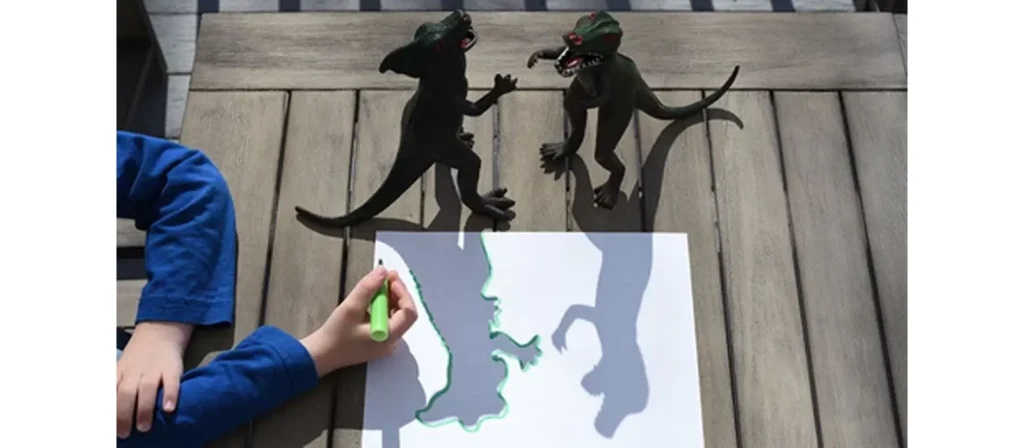
32. Measure with Nonstandard Units
STEM Focus: Math
How to Do It: Let children use blocks, shoes, or paperclips to measure classroom objects and compare lengths.
Materials Needed:
- Measurement items (e.g. blocks)
- Recording chart
This activity builds early measurement and comparison skills.
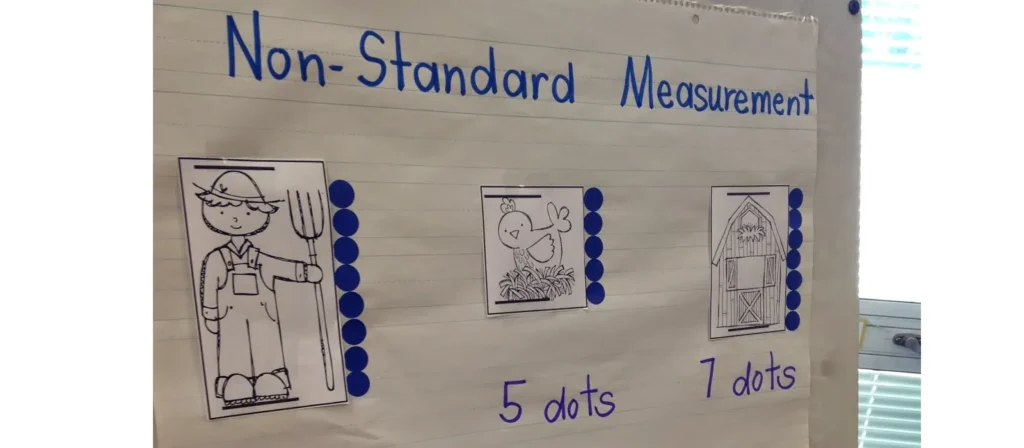
33. LEGO Maze Challenge
STEM Focus: Engineering, Logic
How to Do It: Children build a small maze using LEGO bricks and test if a marble can roll through it. They can redesign based on results.
Materials Needed:
- LEGO bricks
- Marble or small ball
Enhances spatial awareness, logic, and iterative design.
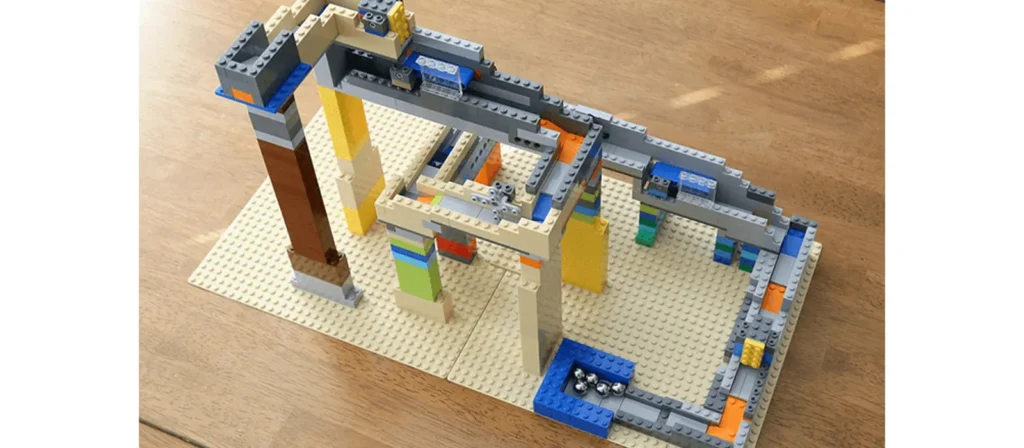
34. Freeze and Melt
STEM Focus: Science
How to Do It: Freeze small toys inside ice cube trays. Let children explore ways to melt the ice faster using salt, warm water, or their hands.
Materials Needed:
- Ice cubes with small toys inside
- Warm water, salt, droppers
Introduces states of matter and problem-solving.
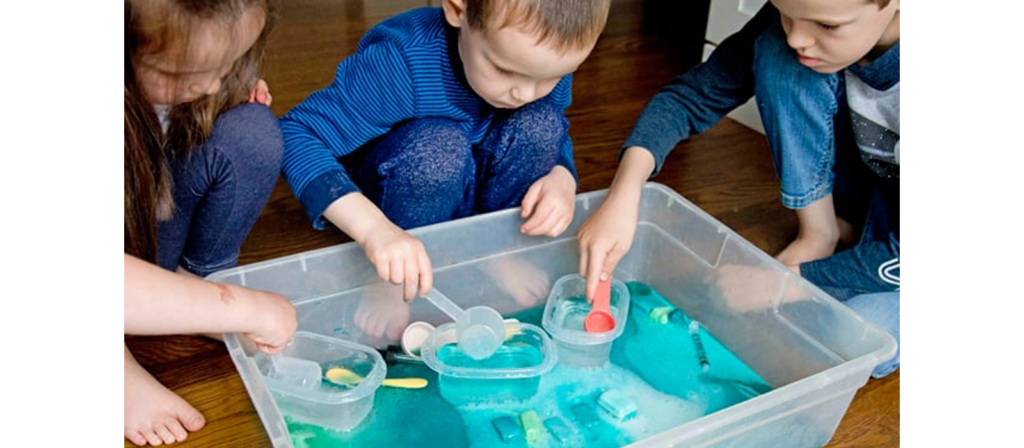
35. Shape Hunt
STEM Focus: Math, Geometry
How to Do It: Provide children with a chart of basic shapes. Have them hunt for items in the classroom or outdoors that match each shape.
Materials Needed:
- Shape checklist
- Crayons
Promotes geometry awareness and observation.
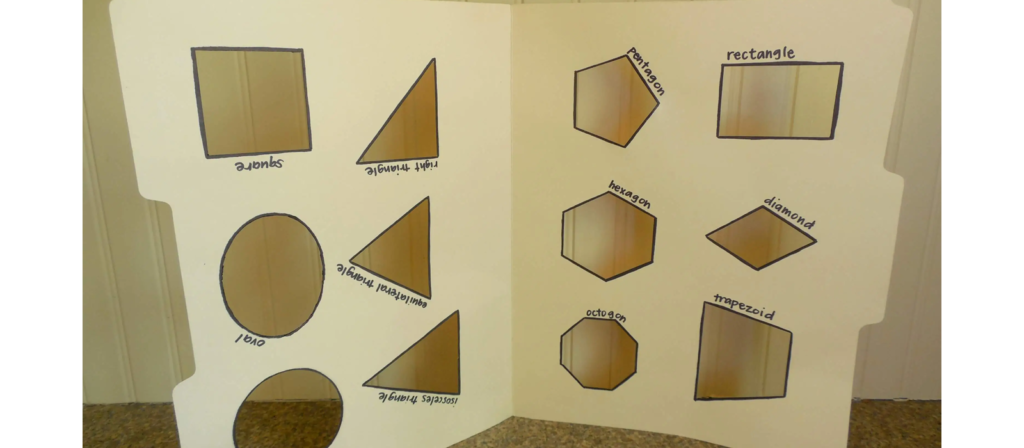
Where to Find More STEM Activities?
Finding reliable sources for STEM Activities for Kids is crucial to maintaining both educational quality and child engagement. Not all activities available online or in books meet developmental standards for preschoolers. As educators and providers, we must prioritize materials grounded in sound educational research and practical classroom experience.
Here are some trusted sources to find high-quality STEM Activities for Kids:
- Educational Publishers: Reputable publishers like Scholastic and NAEYC often offer STEM activity books vetted by early childhood experts. These resources align well with developmental milestones.
- Professional Educational Websites: Organizations such as NASA’s “STEM Engagement” and the Smithsonian’s “Science for Kids” programs provide free, high-quality activities designed to promote scientific literacy.
- Teacher Resource Platforms: Websites like Teachers Pay Teachers feature peer-reviewed STEM lesson plans created by experienced educators, often including detailed materials lists and step-by-step instructions.
- Educational Trade Shows: Attending industry trade shows allows educators and procurement officers to discover hands-on STEM products and demonstrations, often offering activities specifically adapted for preschool classrooms.
By sourcing STEM Activities for Kids from authoritative and field-tested platforms, we ensure that preschoolers experience developmentally appropriate, impactful learning that fosters curiosity, innovation, and critical thinking from the very start.
As an educator, how do you teach STEM to children?
Assist and Guide
Effective teaching of STEM Activities for Kids requires a shift from traditional instruction to facilitation. Instead of delivering direct answers, educators act as guides, supporting children’s exploration and discovery processes. Therefore, a Montessori approach — offering minimal but strategic intervention — is ideal for nurturing independent thinking through STEM.
Use STEM Vocabulary
Introducing proper STEM-related vocabulary early is crucial for building academic language skills. Terms like “hypothesis,” “experiment,” “observe,” or “analyze” give children the tools to articulate their thoughts and understand scientific concepts. Clear language empowers children to describe complex ideas with confidence.
Connect Lessons to Real-Life Experiences
Children learn best when they can relate new information to their existing world. Tying STEM Activities for Kids to everyday experiences, such as measuring ingredients during cooking or observing weather changes, makes learning meaningful and memorable.
Master the Art of Asking Questions
Open-ended questioning is a cornerstone of STEM teaching. Instead of asking “What color is this?” effective educators ask “What do you notice?” or “What do you think will happen if…?”
Research indicates that higher-order questions stimulate deeper cognitive processing and enhance problem-solving skills in young learners. In STEM Activities for Kids, asking the right questions transforms passive observation into active investigation.
Strengthen Collaboration
Collaboration must be intentionally structured within STEM Activities for Kids. Educators can design group tasks that require shared responsibility and collective decision-making.
Help Them Embrace Failure
Failure is not a setback in STEM; it is an essential part of the learning process. Helping children view mistakes as learning opportunities fosters resilience and adaptability. Through carefully designed STEM Activities for Kids, educators can cultivate a growth mindset where challenges are welcomed, not feared.
How to Fully Integrate STEM into the Kindergarten Classroom
Integrating STEM Activities for Kids into a preschool classroom does not require expensive equipment or a total curriculum overhaul. Instead, successful STEM integration relies on intentional planning, flexible teaching, and creating a learning environment where inquiry and exploration are encouraged daily.
Here are key strategies for effective integration:
Start with Simple Materials
Preschool STEM doesn’t require advanced technology. Everyday objects like blocks, water, sand, recycled materials, and basic measuring tools can become powerful vehicles for STEM exploration.
Starting simple ensures accessibility and allows children to focus on developing fundamental thinking skills rather than mastering complex tools.
Create a STEM-Rich Environment
Designate specific classroom areas for exploration: a building zone, a science observation table, or a simple technology station with coding toys or magnifying glasses.
A STEM-rich environment signals to children that curiosity, experimentation, and innovation are valued every day — not just during special activities.
Integrate STEM into Daily Routines
Incorporating STEM Activities for Kids naturally into everyday routines enhances learning. During snack time, discuss how different foods are grown (biology). While cleaning up, count and sort toys (math). During storytime, encourage predictions (critical thinking).
For more inspiration on integrating science into daily routines, check out this guide on science activities for preschoolers.
Seamlessly blending STEM thinking into routines helps children recognize its presence in all aspects of life.
Focus on the Process, Not the Outcome
STEM education for preschoolers is about exploration, not perfection. Activities should emphasize questions like “What did you discover?” or “What would you try next?” rather than whether the project “worked” as intended.
Focusing on the process builds resilience, creativity, and intrinsic motivation to learn.
Provide Open-Ended Challenges
Open-ended STEM challenges, such as “Build a bridge that can hold three books,” allow for multiple solutions and pathways.
This method mirrors real-world problem-solving and encourages deeper engagement, critical evaluation, and collaborative skills among young learners.
FAQs
1. What is the difference between a STEM school and a regular school?
A STEM school emphasizes science, technology, engineering, and mathematics across all subjects through project-based learning and STEM Activities for Kids. Regular schools follow broader, more traditional curricula without specific STEM integration.
2. Is STEM for gifted kids?
No, STEM is for all children. STEM Activities for Kids are designed to develop critical thinking, creativity, and collaboration skills, regardless of ability level.
3. Is STEM safe for children?
Yes, when activities are age-appropriate and supervised properly, STEM Activities for Kids are safe and promote responsible hands-on exploration of scientific and engineering concepts.
4. What is STEM like a girl?
“STEM like a girl” is a movement to empower girls through active participation in STEM Activities for Kids and STEM fields, helping to break traditional gender stereotypes early.
5. Who is a famous STEM girl?
Marie Curie is one of the most famous women in STEM history. Modern examples, such as Dr. Katie Bouman, show how early exposure to STEM Activities for Kids can inspire future scientific achievements.
6. Is there sexism in STEM?
Gender bias still exists in some areas of STEM. Early engagement in STEM Activities for Kids is crucial to promote gender equality, confidence, and long-term participation for all students.
7. Do STEM schools cost money?
Many public STEM schools, where STEM Activities for Kids are part of daily learning, are free. However, private STEM academies may charge tuition fees depending on location and program offerings.
8. What are the disadvantages of STEM education?
Without proper balance, STEM education could sometimes overshadow arts and emotional development. Well-designed STEM Activities for Kids ensure a holistic learning approach by integrating creativity with technical skills.
9. Should I send my kid to a STEM school?
If your child enjoys critical thinking, building, experimenting, and hands-on STEM Activities for Kids, a STEM school could provide an ideal environment to nurture their talents.
10. What gender dominates STEM?
Historically, males dominate many STEM fields. However, with increasing participation in STEM Activities for Kids, more girls are now pursuing and excelling in science, technology, engineering, and math.
11. What are considered STEM careers?
STEM careers include professions in science, technology, engineering, and mathematics — such as software developers, biomedical engineers, data scientists, and researchers. Early exposure through STEM Activities for Kids can spark interest in these fields.
Conclusion
Introducing STEM Activities for Kids at the preschool level is more than just a trend; it is a strategic investment in nurturing the next generation of thinkers, creators, and problem solvers. By fostering curiosity, critical thinking, and collaboration early on, we build a strong educational foundation that prepares children for a rapidly evolving future. These activities empower young learners to connect ideas, innovate fearlessly, and embrace challenges with resilience.
Incorporating STEM principles into early childhood environments also requires thoughtful design and quality learning spaces. At Xiha Montessori, we understand the unique needs of preschool classrooms and offer carefully crafted Montessori and Reggio-inspired furniture that complements STEM education. Our commitment to creating functional, child-centered learning environments helps ensure that every STEM Activity for Kids is supported by safe, stimulating, and developmentally appropriate materials, setting the stage for meaningful exploration and discovery.

